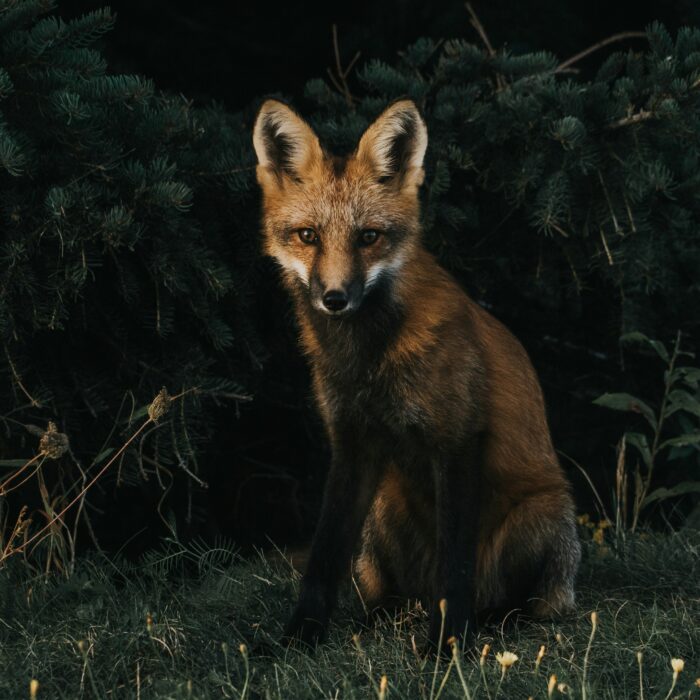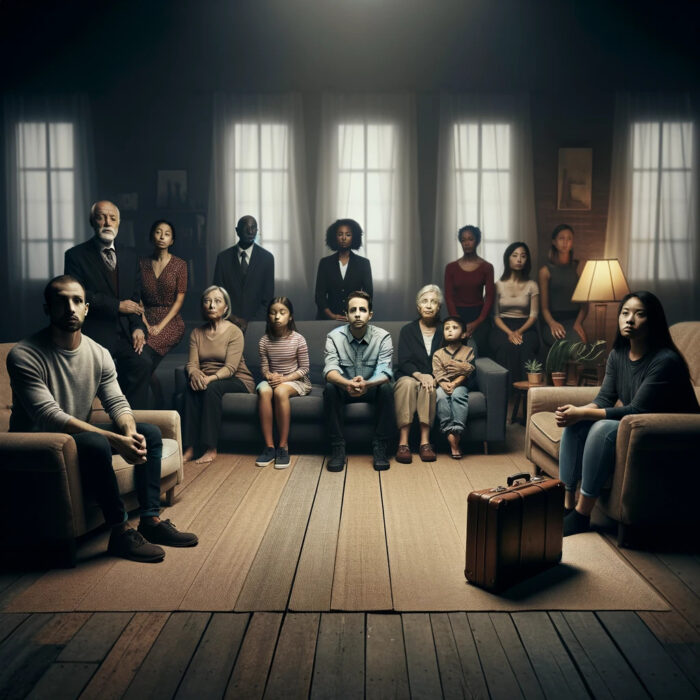You have no items in your cart. Want to get some nice things?
Go shopping
All Val could see from the back of the conference room was row after row of perfect hair. Flawless bobs, splendid blonde ringlets, asymmetric cuts so precise not a strand was out of place. No curling irons, blow dryers or “product” for this crowd. All they’d had to do was wake up, slip on their wigs, and drive to the hospital.
They were there for “Thrive Alive,” a daylong seminar for breast cancer survivors who were at least one-month post-treatment. At 48 days, the name survivor seemed like a stretch to Val. Cancer wreckage was more like it. Beneath their impeccably styled hair, they were nursing amputations; chemo-pickled organs; and skin, burnt and peeling from radiation.
The two morning sessions – “Breakthroughs in Post-Cancer Hormonal Therapy” and “A Diet for Survivors” – were so boring, Val had been forced to analyze coifs to stay awake. Of the 79 women, there were 57 blondes, and bobs were definitely back.
The moderator announced the start of the Q&A and the young woman next to Val raised her hand. Her arm only reached half-way up, as though she were swearing an oath in court, and Val knew they shared the same crippling scar tissue, a side effect of some mastectomies. The woman had on a Cher-like wig, two glossy black pelts draped over her battered chest. Val tried to remember the wig’s name, the Layla or maybe the Rene. She’d spent hours poring over wig catalogues, though she’d never bought one. Now, she was the only wigless one in the room. Just a blue and white striped scarf tied behind her neck.
“Can we eat tofu?” Cher asked. “I don’t want to feed my cancer, but…”
“Hold it right there,” the nutritionist on the panel said. “Try not to assume you still have cancer cells, OK?”
Cher nodded her head and continued, “I’d just heard that tofu has estrogen and I have, I mean had, estrogen-positive cancer.”
“The jury is out on toxicity of tofu.”
Val imagined cubes of tofu next to a pack of cigarettes on an anti-cancer poster.
When the nutritionist asked if she could live without it (not a shred of irony in her voice), Cher twice said, “Absolutely,” as if a moratorium on soybean curd would save her.
Participants asked about juicing regimes, sex after hormone therapy, and the new sugar scare. When the oncologist advised them to eat sugar in “moderation,” the room erupted with demands for greater precision. “Is one Snickers bar OK or should I stick to a half? Does honey count? What about molasses and stevia?”
Val stared out the window, relieved she no longer had to care. For a year, she’d rampaged the Internet for cures, grilled doctors, purchased juicers, ate seaweed, quit drinking, sipped a vile broth made from onions with the skins still on. Anything to boost her chances of surviving Stage 3B cancer.
Stage 3B was the “D” of cancer grades, a near failing assessment just shy of a terminal diagnosis. Still, she’d rallied. She’d joked with her oncologist (“How about if I do a little extra credit and you change me to a 3A?”), agreed to a bilateral mastectomy, and bravely endured the “red devil,” the most wretched form of chemotherapy, reserved for the hardest cases. Even during her last round, when her nose was bleeding and the wood floor by her bed was tattooed with vomit stains, Val believed she would get well.
But three days after her last radiation treatment when she should have been celebrating, her optimism vanished. The fears she’d so vigilantly fought off during treatment consumed her. She was convinced she was dying and should start living as such. She refused to make plans more than a week in advance. She spent most days clearing out closets and drawers to make it easier on her husband once she was gone. She bought him a 12-month supply of shaving cream, Tums, tuna fish, shampoo, and two new pillows as he wore them out quickly with his night sweats. She was nesting – only for death, not life.
She’d even paid $365 for an eHarmony membership for her husband, filling it out in his name and sending him links with her own commentary (“Her Teeth alone Could Make her President” or “Finally, a woman who likes to cook!”).
Jake, her husband of thirty-two years, forced her to go with him to an elfin, silver-haired therapist named Hank. Hank spoke so softly, Val had to sit on the edge of the couch to hear him.
“Five-year survival rates for Stage 3 are 72%,” he whispered.
“What happens after five years?” Val asked.
“Why did you have to ask that?” Jake had said as they left. “Can’t you just accept the fact that you’re probably going to outlive me?”
But there was no ripping the roots out of it. Val had even started to think about suicide so Jake could take advantage of the one-year eHarmony membership before it expired.
After the therapist told them about the seminar at the hospital, Jake hounded her until she agreed to go. In bed the night before, he’d read her excerpts from the web site. “It’s about how to move on after cancer … how to live by living…”
So far, all Val had taken away was a narcotic-free recipe for suicide: Wine, Snickers, and Tofu.
When the Q&A was over, the moderator announced that there would be a “few surprises” in the pavilion after lunch. Val hoped it was a dessert buffet. Since deciding it was over, she’d been eating nothing but sugar and cheese. She’d smoked two packs of cigarettes in the backyard and stood brazenly close to the microwave. It was liberating not to care anymore.
The volunteers had set up café-style tables at the back of the room. There were pink napkins, pink tablecloths, and pink ribbon centerpieces, reminding Val of the nursery she’d decorated for her oldest daughter, back when pink was the color of innocent little girls.
Val grabbed a box lunch from the cart and sat down next to Cher, the newly converted soybean abstainer.
“Hopefully, no tofu in our lunches today,” Val said.
Cher looked up but didn’t smile. “I’m a vegetarian so there are not many protein sources left for me.”
“I’m sorry,” Val said. She reached out her hand and introduced herself, hoping the friendly gesture would make up for her insensitivity.
“Maddie,” said the woman without looking up from her notebook. Val let her hand drop into her lap and looked at the page Maddie was reading. She’d underlined the word, “wine” and a scribble that said “1 glass a day” with a large question mark next to it.
“Do you think white wine is as bad as red?” Maddie asked.
So much for the normal cancer pleasantries: name, stage, treatments. Maddie was all business.
“I don’t think a drink will kill you,” Val said.
“If a dry white has less sugar than red and it’s sugar that feeds cancer, wouldn’t that be better?” Maddie asked.
Val could hear the panic in her lunch partner’s voice. Even when Val had been at the height of her daily juicing, traveling once to Mexico for intravenous vitamin infusions, she never felt she was doing enough.
“Do you still drink?” Maddie asked.
Val had taken to sipping martinis on the deck after breakfast. “I do, but don’t go by me. I’m on the way out.”
Maddie looked up from her notes. “You’re terminal?” she asked.
“Yes.”
Maddie’s eyes widened. She closed her notebook and looked around the room, probably to find somewhere else to sit. The hospital had strict rules about mixing early-stagers with terminal patients, who had their own support groups. They were grappling with different issues, but Val suspected it was too upsetting for the early-stagers, still clinging to their hopes of full recovery.
Val stuffed her sandwich in the box and left for the pavilion by herself. She didn’t want to scare Maddie anymore.
The pavilion turned out to be the sitting area at the entrance to the cancer annex. The organizers had removed the chairs and mobile coffee bar and set up a dozen makeover stations: mani-pedis, mini facials, a tall thin woman doing colors. There was a carnival like atmosphere with balloons and bowls of forbidden Tootsie Rolls at each table.
Val thought about calling Jake to rescue her when a makeup artist in a black smock accosted her. Her young face was thick with cream-colored foundation and harsh lines of blush at her cheekbones. She reminded Val of the aggressive salespeople at mall kiosks.
“Can I help you with your eyebrows?”
“Yes, I’ve lost them. Can you find them?”
The girl didn’t laugh. She’d probably been warned to stay focused on lashes and lipstick, nothing too personal. Val felt bad. Even if she would be gone soon, she needed to be nicer. “Sure, do your thing,” Val said, sinking into the plush chair next to the table. The full morning had exhausted her and she closed her eyes. The nurse told her fatigue was normal, but Val saw it as a sign of her impending death.
The girl worked on her bald brow line with several different pencils before holding up the mirror.
“Don’t they look great?” she asked.
It looked like someone had drawn on her with a black Sharpie. With some white face makeup, she could pass for a mime.
Val thanked the girl and walked on, sidestepping the colorist. She’d had her colors done in the ’80s and knew she was an autumn. If there was a new palette for the sickly grey pallor of her skin, she didn’t want to know.
At the “Five-Year-Survivor Meet and Greet” table, Val saw one of the organizers tugging at her curly brown hair.
“It’s 100% real,” Val heard her say to two participants.
“How long did it take to grow back?” asked one of the women, her wig a bob with razor straight bangs.
“Two years.”
Val saw the hope fall from the bob’s face. Two years was a long time.
This focus on their appearance seemed so dated, like something out of the 1950s. Did men with testicular cancer get a grooming seminar? Prosthetic balls?
Losing your breasts and hair, even your eyelashes, was traumatic, Val thought. But despite all the progress women had made, looks were still their currency and breast cancer had left them all bankrupt.
Even Val felt it. She was the only one in her support group not to get breast reconstruction, worried complications could delay chemo and radiation. She’d opted instead for two silicone breasts she could slip into the pocket of a special bra. At night, standing naked in front of the mirror, she would stare at the macabre version of her flat-chested eleven-year-old self. The sacks of scarred skin, the way her middle-aged belly jutted out, alienlike without the counterbalance of her large breasts. Sometimes, she’d run her fingers over her rib cage, longing for the tingle she’d once felt when stroking her own nipples.
Val was about to leave when she saw the “Christina” sitting on a table at the wig stall. It was one a several styles she’d obsessed over early in her treatment before she panicked one night, afraid that wasting time on wigs would end up killing her. She should be scouring the Internet for cures, not wigs. Like breast reconstruction, wigs were a diversion, a deadly vanity.
Val walked over to the Christina and touched the strands. They felt a little dryer than human hair but seemed real enough. “Wispy with tasteful but fun spikes. Synthetic,” the tag said. The cut was short – dirty blonde with a row of choppy bangs and a few wispy strands framing the eyes. The main attraction was the spikes – they were everywhere, popping up on top, at the sides and in the back, reminding Val of their old Australian Terrier, Snappy.
“Want to give it a try?” asked the grey-haired woman in charge of the stall.
Val touched the blue and white scarf on her head, smoothing it down at the back. She’d found it in a cardboard bin at the cancer center (“Take one if you need it; Give one if you don’t.”).
“It can’t hurt,” the woman encouraged.
Val slid the scarf off her head and sat in a chair at the center of the stall.
The woman plucked the Christina off the Styrofoam head, deftly slipping her hand underneath its cap.
Val leaned back and closed her eyes, as the woman adjusted the wig, sliding it to the left and then pushing it down over Val’s broad forehead.
“Perfect,” she finally said and held up the mirror.
Val didn’t recognize herself. She’d never been a blonde, let alone a spiky blonde. She pulled on one of the spikes and was surprised she didn’t feel any pain at the roots, forgetting for a moment that it wasn’t real.
Val liked the edgy look it gave her, so much less pathetic than her cancer-screaming scarf, and handed the woman her credit card.
It was not until she left the seminar that Val noticed the difference. Not one person stared at her as she walked down the hospital’s hallways. No pitying glances. No looking away. She was invisible, the same as everyone else. The difference was so extreme, she wondered why she hadn’t bought a wig sooner. Had she worn a scarf for pity? Out of anger? (Don’t you act like everything is OK without seeing my pain and horror.)
Val scanned the parking lot for their green Subaru and saw her husband, asleep with his head drooped over the steering wheel. He’d driven her to every chemo appointment, held her hand when the nausea was too much, watched (and even re-watched) Downton Abbey.
“You look amazing,” he said, as she got into the car.
“Don’t touch the eyebrows. They smear,” she said.
“I never saw you as blonde, but I like it.”
Val tried to smile. She knew he was hoping the seminar had worked. How badly he wanted the old fighter back, to be rid of this suicidal depressed woman stockpiling toothpaste.
Jake reached over and lightly touched her new hair. Val could have sworn she felt something.

Eve Rose
Eve Rose is an award-winning journalist who has covered everything from the U.S. Congress to the Iditarod. Eve studied creative writing at NYU and the Vermont College of Fine Arts. Her work has been published by Pure Slush (Australia), Litro, among others.





This is a brilliant read, so well written, sad and funny and very very moving, thank you!
Nice story. Really well done.